Kolkata, the City of Joy, is a metro city in eastern India and the capital of West Bengal. The city is also recognized as the first metro city and also among the top legacy cities of India. But history of Kolkata is rather significant for its two major contributions in Indian history. Firstly, the conflict between the Nawab of Bengal and the British East India Company that began colonial rule in India. And secondly, the pivotal role of the city nationalists in Indian freedom movements.
The earliest documentary traces of Kalikata (old name of Kolkata) dates back in 15th century CE. Bengali poet Bipradas, had mentioned about Kalikata in his Manasa Mangal kavya (poem). But archaeological findings have confirmed that habitation of today’s Kolkata region existing from Mauryan age (300 BCE).
Kolkata or old British Calcutta had also been notable for art and cultural developments in 19th and 20th century. Many novelists, poets, writers and nationalists born in the region who had majorly contributed to the Renaissance of Bengal.
1. Name Origin of Kolkata
Kolkata city was formed with three small villages of Sutanuti, Gobindapur and Kalikata and surrounding marshy lands. Job Charnock is often credited as the founder of the city. The name Calcutta was given by the British, but the city was always known as Kalikata by the local Bengalees.
There are several theories that explains about the origin of the name Kalikata. One theory mentions the name was derived from Hindu goddess Kali. According to this theory, the original name of the place was ‘Kalikshetra’ or the land of Kali. However, a lot of experts disagree to this theory.
Another theory states that the name Kalikata was a combination of two words Kali and kata. Kali means lime and kata denotes to burnt shell. Many experts believe, the region may have got the name since it had many shell-lime manufacturing units then.
2. History of Arrival East India Company (EIC) at Kolkata
History of Kolkata had formally been documented since the British settlement in Bengal. The British records suggest they found it really difficult to set up trades in Bengal. Records suggest EIC agents even visited during period of Ibrahim Khan (1689-1697), the Mughal Subahdar of Bengal. Mughal forces have beaten and expelled the British traders quite a few times from Bengal.
East company ships near Visapur, Maharashtra was causing trouble in pilgrimage to Mecca. Aurangzeb, accounting the factor, ordered Ibrahim Khan to allow EIC to return in Bengal. Ibrahim Khan, hence, asked Company agent Job Charnock to return to Bengal. But Job Charnock, despite the verbal acceptance, asked for a written farman (order). East India Company eventually got the Mughal farman against an annual tax of Rupees 3,000.
3. History of Foundation of Calcutta
Job Charnock, on the basis of verbal acceptance, arrived at Sutanuti in 1690 with 30 English soldiers. The farman of Mughal emperor took few months and was eventually issued in 1691. Charnock chose the region on the eastern bank of river Bhagirathi-Hugli (secondary branch of river Ganges) for setting up trades. Unfortunately, Job Charnock died in 1692. But before he died, all proceeding towards foundation of Calcutta was set up.

British East India Company bought three villages of Sutanuti, Gobindapur and Kalikata in 1698, from a local landlord Sabarna Chowdhury. EIC kept developing the three villages and declared the region as Presidency city of Calcutta in 1699.
4. Construction of Fort William
East India Company wanted to construct a fort at Calcutta to protect their factories. But Ibrahim Khan wasn’t at all ready to accept such request. In 1695, Afghan commander Rahim Khan seized the Hooghly town. Surrounded by enemies, the EIC requested Ibrahim Khan to allow fortification to protect EIC factories. Forced by the situation, Ibrahim Khan finally granted permission to build a fort at Calcutta.

Although the grant of fortification was subject to factory protection only. But his orders did not specify them properly. EIC misused the order and started building the fort as they wanted. Company completed the construction of Fort William by 1696 and named the fort after the British King William III.
5. Black Hole Tragedy of Calcutta: Treaty of Alinagar
The Black Hole Tragedy of 1756 made the city infamous in the world. On 20th June, Siraj ud-Daulah, the Nawab of Bengal, seized Fort William. By the evening, Nawabi army put the surviving British soldiers into an 18 feet X 14 feet dark cell. On the next morning when the cell was opened, only 23 soldiers out of 146 remained alive. Remaining soldiers had all died overnight due to extreme suffocation.

Another record describes that only 64 prisoners were sent into the Black hole chamber. Only 21 soldiers survived from the Black hole massacre of Calcutta.
Nawab Siraj-ud-Daulah renamed the Calcutta as Alinagar, after his maternal grandfather and predecessor Nawab Alivardi Khan. Thus Alinagar became another old name of modern day Kolkata or British Calcutta. But the name stayed for a very short period, until Robert Clive recaptured the city from Nawab Siraj ud-Daulah.
East India Company appointed Robert Clive arrived in Calcutta to recapture Fort William. Nawab Siraj also realized the complication for defend Alinagar from two giant forces: Afghans and British. On 9th February in 1757, Nawab Siraj ud-Daulah signed the Treaty of Alinagar with East India Company. In the Treaty of Alinagar, Nawab agreed to fulfill all terms of the farman issued by Mughal emperor Farrukhsiyar in 1717.
6. Establishment of Writers’ Building of Kolkata
In 1772, Calcutta became the capital of British India. Company felt the need of consolidating the trading operations in India. Hence they needed to have an administrative office. Company appointed many junior clerks, known as writers then. So, the first administrative building of Calcutta got the name Writers’ Building.

Writers Building was built in 1777, by the East India Company. Initially the Writers Building had served as administrative office but later turned into the secretariat of British India. The building kept expanding until 1947, where 13 more blocks were added to the main block in different phases.
7. First News Paper Printing Press of India at Kolkata
James Augustus Hicky, an eccentric Irishman, published first newspaper in 1780. Sir James established Hicky’s Bengal Gazette, the first newspaper printing press of India, in British Calcutta. Ironically, Hicky’s Bengal Gazette criticized the British East India Company’s government officials and policies. In a report, Hicky’s Bengal Gazette accused Governor-General Warren Hastings of corruption. To its fate, East India Company seized the newspaper’s types and printing press in 1782.
8. Formation of Asiatic Society of Bengal
Asiatic Society opened up the opportunity for many scholars across the world to work on multiple Indian and foreign languages. Sir William Jones founded Asiatic Society of Bengal by in 1784. The society and sir Jones started working very closely with many Indian scholars on various Indo-European languages. Hindu Pundits of Kalighat also worked very closely with the society.
As a result, western cultures started merging with Indian Hindu cultures. It gave a massive boost to Calcutta’s intellectual life.
9. Foundation of Indian Museum of Kolkata
In 1814, the Asiatic Society of Kolkata founded the Indian Museum, the largest and oldest museum in history of India. Danish botanist Nathaniel Wallich was the main curator of the museum.
The first museum of India was built with a very large collection of rare antiques, armors and ornaments. Animal fossils, skeletons and mummies became major attraction of the museum. Indian Museum of Kolkata also houses a large collection of rare paintings, including many British and Mughal paintings.
10. Establishment of Hindu College of Calcutta
The Hindu College of Calcutta, now known as Presidency University, was the first modern higher learning education center of Asia. Raja Ram Mohan Roy and David Hare founded the Hindu College of Calcutta in 1817. The college was initially intended to educate the Hindu families of Calcutta in English and other European literatures. Hindu community in Calcutta, hence played a major role in formation of Hindu College.

In 1855, the Hindu College of Calcutta became a government institution and was renamed as Presidency College. Subjects included English, Bengali, Sanskrit, history, geography, astronomy, mathematics, chemistry, law, commerce, and engineering.
11. Sati Prohibition Act of 1829
Sati was probably the most culpable Hindu practice of 18th century. Hindu widows had to sit beside her deceased husband’s funeral pyre and immolate herself.

Raja Ram Mohan Roy raised his voice against the practice of Sati and started his campaigns against it. He also got commendable support from the British Christian evangelists. Finally in 1829, Lord William Bentinck brought the regulation act to declare the practice of Sati as illegal. The act applied across entire jurisdiction of British India as a punishable offense. It brought the much wanted end of practice of Sati in entire India.
12. Foundation of Calcutta Medical College
Establishment of Calcutta Medical College had a great significance in the history of Kolkata. Calcutta Medical College became the first English medium institute in India and only second institute studying western medicine in Asia. Lord William Bentinck, first governor general of British India, founded Calcutta Medical College in 1835.
The institution introduced intense courses in anatomy, physiology and pathology. But at the same time, western medicine courses marked the end of indigenous medical learning. Hence it led to criticism by Indian practitioners and nationalists. Anyways, western medical education began to spread across the entire Indian subcontinent. Calcutta Medical College produced many notable alumni, including Sir Nilratan Sarkar, Dr U N Brambhachari, and Dr Bidhan Chandra Roy.
13. Foundation of Calcutta High Court
Calcutta High Court was the first High court in India, and one of three chartered High Courts of Victorian era. The Calcutta High Court was established in 1862, under the High Courts Act, 1861. Sir Barnes Peacock was the first Chief Justice of the Calcutta High Court. Justice Sumboo Nath Pandit became the first Indian Judge of the Calcutta High Court.

14. History of Formation of Calcutta Port and Port Trust
East India company built Calcutta port gradually. Realizing the importance, British government formed a River Trust in 1866. But the government soon realized the need of enforcing proper law to run the port trust. Hence, British government took up the administration again, disbanding the River Trust. Finally, in 1870, the Calcutta Port Act was passed in 1870. Thereafter, the office of Calcutta Port Commissioner was built.
Calcutta port played a significant role during the Second World War. Japanese bombed Calcutta Port twice during the war.
15. Formation of Calcutta Tramways Company
The first horse drawn tram ran on the streets of Calcutta on 24th February 1873. First Tram route constituted 2.4 miles (3.9 km), between Sealdah and Armenian Ghat Street. But British government discontinued the service in November, the same year.

Seven years later, the Calcutta Tramways Company was formed and registered in London in 1880. Meter-gauge horse-drawn tram tracks were laid among Sealdah, Armenian Ghat, Bowbazar Street, Dalhousie Square and Strand Road. Viceroy Lord Ripon inaugurated the routes on 1st November 1880. In 1900, electrification of tramways began. The first electric Tram car ran in Calcutta between Esplanade and Kidderpore on 27th March 1902.
16. Foundation of Indian National Association and National Congress
In 1883, Calcutta held the first all India national conference. It eventually gave birth to the Indian National Congress. Sir Umesh Chandra Banerjee became the first native president of Indian National Congress. He was also the first to advocate self-rule by Indians. Sir Surendra Nath Banerjee was another personality who provoked nationalist mindset in late 19th century. In 1921, Netaji Subhash Chandra Bose joined National Congress under Gandhiji’s leadership. Netaji became president of Congress in 1938.
Indian National Association was the first recognized nationalist organization of the British India. Surendra Nath Banerjee and Ananda Mohan Bose founded the Indian National Association in 1876. The association soon became an important forum for Indian nationalists from various parts of the country. The Association gave the young middle-class community a political platform on a more democratic basis. Surprisingly, the association didn’t include any business icons or landlords, but mostly educated young men, lawyers, and journalists.
17. Secret Freedom Movements at Calcutta
Secret rebel organizations like Jugantar and Anushilan Samiti were active in Bengal during early 20th century. These organizations had used violence in their anti-British movements. Many of Jugantar and Anushilan Samiti members killed, arrested or deported to Andaman cellular Jail by the British.
Sri Aurobindo, Bipin Chandra Pal were the most eminent nationalist leaders in history of early 20th century Kolkata.
Vande Mataram, a poem from Bankim Chandra Chatterjee’s novel “Anandamath” influenced freedom movements of India. Rabindranath Tagore sang the song in a political context during 1886 session of Indian National Congress. Since then the song became the marching song for all forms of India’s freedom struggle.
Indian nationalist and philosopher Sri Aurobindo referred Vande Mataram as the National Anthem of Bengal. However, the British government had banned the song. National activists whoever defied, either were arrested or beaten. On 24 January 1950, Vande Mataram became the National Song of India, adopted by Constituent Assembly of India.
18. Art and Literature of Kolkata
Kolkata had also been the epicenter of literature between 18th and 20th century’s history of India. The city had given birth to many writers and poets which is marked as Renaissance of Bengal or Bengali Renaissance. Bankim Chandra was notable for his novels and literatures. He was recognized as “Sahitya Samrat” (king of literature) for his influence on Bengali Literature.
Rabindranath Tagore, with his poems, novels and literatures influenced Bengali arts and literature immensely. In 1913, Rabindranath Tagore became the first non-European and also the first lyricist to win Nobel Prize in Literature.

The famous song “Jana Gana Mana” written by Rabindranath Tagore became the National Anthem of India. After freedom of Bangladesh in 1971, his another song “Amar Sonar Bangla” also became the National Anthem of modern Bangladesh. Rabindranath Tagore was the first to call Subhash Chandra Bose as Netaji which the entire nation followed thereafter.
Swami Vivekananda (1863-1902) dedicated his life in teaching and guiding the youths on social services and character building. His lectures and speeches across had inspired many youths across the world. Many young Indians came ahead to serve the nation.
19. First Theaters at Kolkata
The city of Kolkata also had a very long history of commercial theaters. First commercial theater of Calcutta, Star Theater of Hatibagan was built in 1883. Later with arrival of group theaters in the decade of 1940s, craze of commercial theaters had dropped a lot.
Group theaters of Kolkata, having no such profit making agenda, mostly focused on highlighting social messages. Hence, they played a key role in social reformation during 20th century’s Kolkata. Nabanna (1944) is considered to be the first among the group theaters ever played in Kolkata.
20. First Sarbojonin Durga Puja at Kolkata
The culture of Kolkata concerns the music, art, museums, festivals, and lifestyle within Kolkata.
Durga Puja, the world famous festival of Kolkata earlier were limited among the rich and royal families of Kolkata. But during mid 19th century Bengal’s favorite festival got its most renowned communal form. Kolkata’s first Sarbojonin Durga Puja or Barowari Durga Puja happened 1910 off to Balaram Bose ghat of Adi Ganga. Efforts were taken jointly by the locals of Kalighat and Bhawanipore.
21. Foundation of Howrah Bridge
Howrah Bridge, now a symbol of Kolkata’s cultural identity, was commissioned in 1943. Replacing a 1874 made pontoon bridge, Howrah Bridge is also a symbol of engineering excellence. It is also recognized among the world’s largest cantilever bridges. The riveted steels of Howrah Bridge expands during the day and contracts during night. Strong winds also make the bridge bend slightly.

The main purpose of building Howrah Bridge was to withstand Japanese attacks during the World War II. It played a vital role during the war by facilitating the movement of troops and supplies. Japanese airplanes bombed Kolkata between 1942-44, attempting to destroy Howrah Bridge and the seaport. The British responded by setting up balloons, preventing the bombers from flying low to hit the targets.
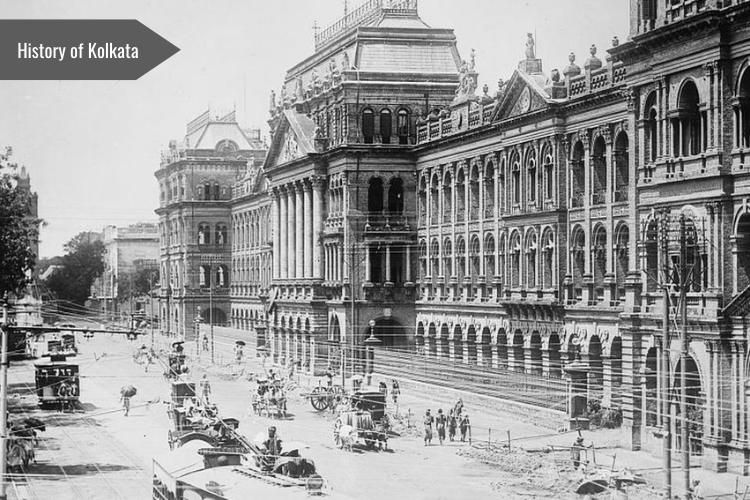
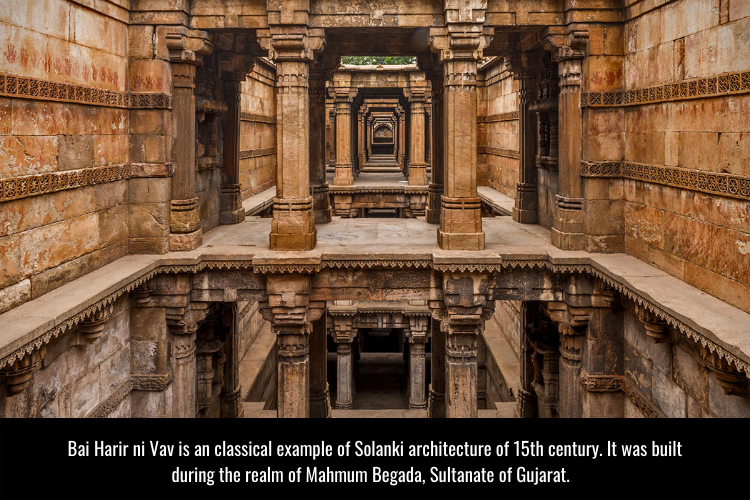
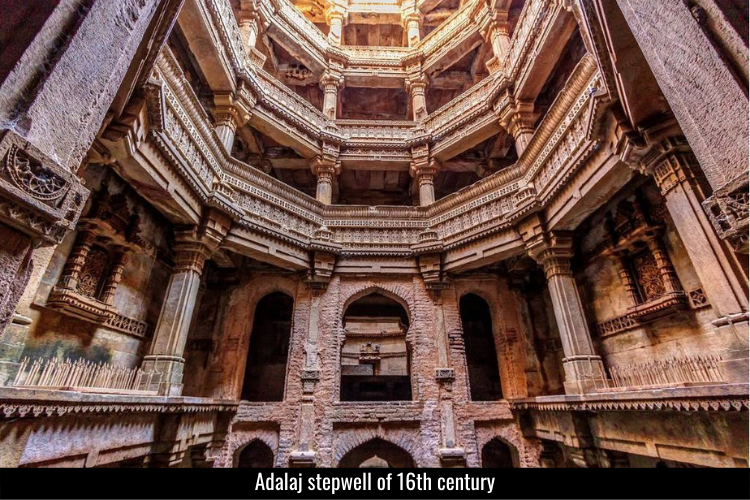
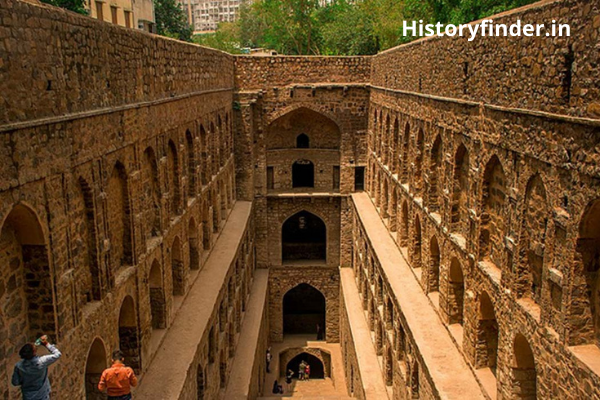
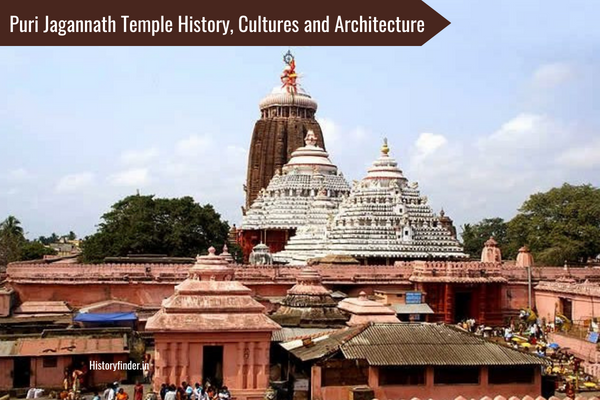
Pingback: Victoria Memorial Kolkata history and architecture - History Finder
Pingback: Writers' Building Kolkata - History Finder
Pingback: Mysore Palace Karnataka history and architecture - History Finder
Pingback: Red Fort of Delhi history and invasions - History Finder
Pingback: History of Indian Museum Kolkata - History Finder
Pingback: History of Murshidabad: From Glory to Downfall - History Finder
Pingback: Battle of Plassey: Background and result - History Finder